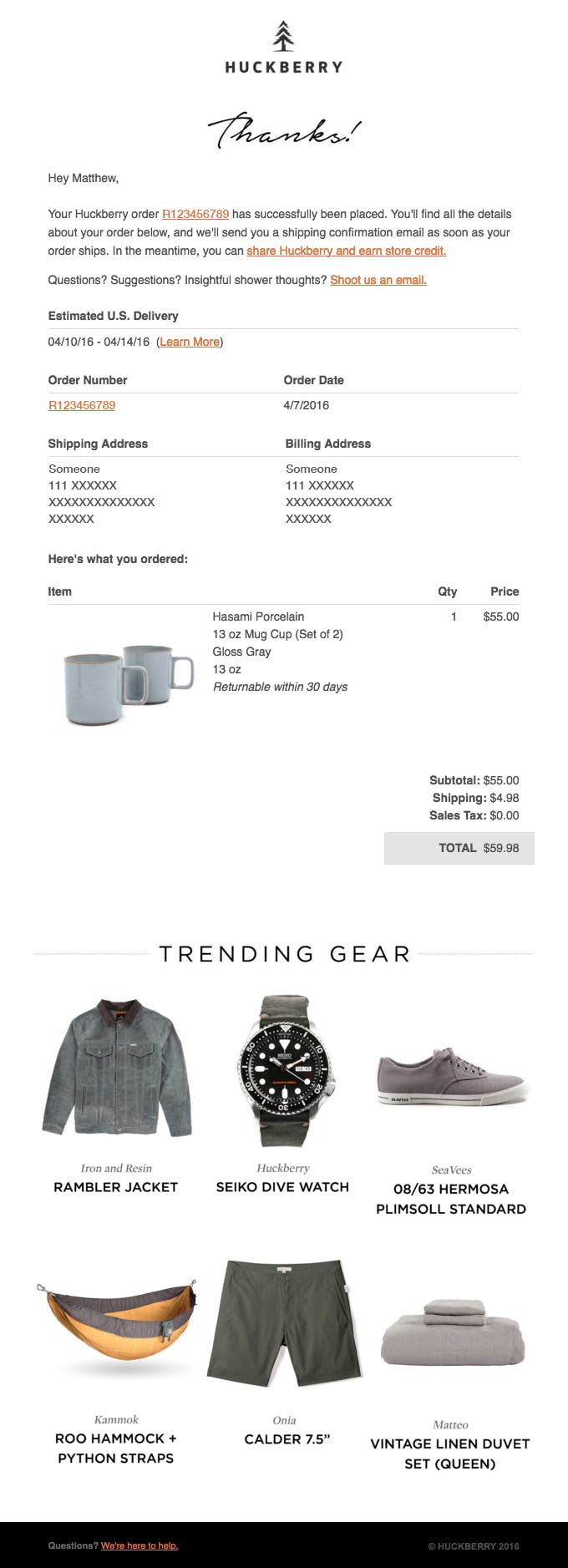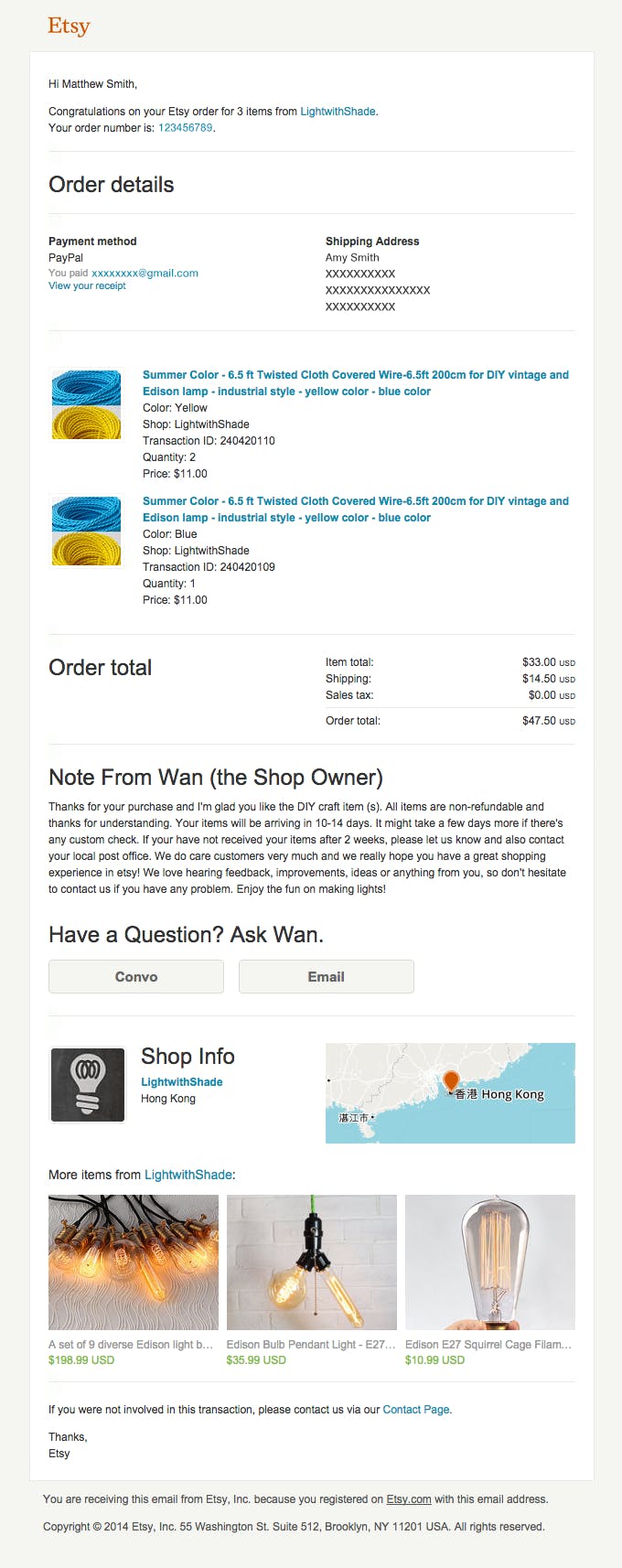
Don't overlook your site's transactional emails! Read on to see why the average transactional email has a CTR 4x higher than average marketing emails.
It’s that time again! Time for another installment of Ecommerce Fundamentals! (see Ecommerce Fundamentals v1) This time around we’re talking about transactional emails. The often overlooked automated emails that look like they were built using Microsoft Word. Ironically these second thought messages have the highest engagement and conversion rate of any marketing email, when implemented correctly.
With typical revenue generated being 600% higher than an average marketing email, these hidden powerhouses really should be one of the first items on anybody’s ecommerce digital marketing to do list. Sadly, the average SMB, and the majority of the large ecommerce sites stick to the ineffective templates that often come standard with their content management system. Lacking the foresight to see the opportunity in front of them, these victims of mediocrity are destined to maintain an average, at best, email marketing campaign.
Before we get too far ahead of ourselves it's best that we specify what a transactional email is. The most agreed upon definition of the category is: “Any email that is triggered by a user’s interaction with a website”. Some of the most common examples include: purchase receipts, tracking updates, and subscription confirmations.
Email’s Golden Goose
Why should we spend any time on an email that the user only receives after they have converted or purchased a product? The answer isn’t obvious, but it is simple, because these emails engage users, and the drive further conversions better than any other email campaign out there. Transactional emails contain crucial information that most users will need access to. Items like tracking numbers, account specific links, and receipts will often be opened more than once. In fact, messages referring to order confirmations have open rates just north of 70% while your average promotional email is closer to 17%. With today’s on-demand attitude, and ephemeral attention span, you literally can’t buy this level of engagement.
A More Familiar Audience
In addition to their impressive open rate, transactional emails have a conversion rate that any promotional email would envy. Your average ecommerce email has a click through rate of 3.1% and a transaction rate of .09%. Comparatively the average transactional email blows those numbers out of the water with a click through rate of 12.5% and a transaction rate of .76%.
The mighty conversion, and open rates of transactional emails, should hardly come as a surprise when you consider the audience you’re corresponding with. This group isn’t just a solid demographical representation of your customers, THEY ARE YOUR CUSTOMERS. These patrons have paid for your product recently, will likely will have the need/ability to do so again, and currently have your brand top of mind.
When considering the ROI of a transactional email campaign weigh the investment against the amount of emails you are currently sending. Budding online stores may not have the volume necessary to see an immediate return on a transactional campaign. However, well rooted ecommerce storefronts will do well with some additional effort spent marketing to their existing customer base.
Designing A Transactional Email Campaign
Be aware, there are some regulations (Can Spam Act) that should be considered before you begin any email marketing. Fortunately, it is easy to stay in compliance as long as you keep your users interests in mind, and follow the 80/20 rule of transactional emails. The 80/20 rule states that you use 80% of your emails space to serve its primary function while using the remaining 20% for marketing purposes. <br />A wonderful example of a transactional email that is in full compliance of the Can Spam Act while also maximizing on the opportunity is Huckberry’s order confirmation email.

In this example the event that triggers the email, an order being shipped, is addressed first by providing all important information at the top in an easy to find layout. Once the initial need has been addressed, then the marketing material is added without causing a distraction from the messages main purpose.
Etsy, the king of internet arts and crafts, does a fabulous job of adding promotion material to their order confirmation email.

All the information you could need is readily available, branding from the website to the email is consistent, and the purpose is clear. Etsy then interjects with its marketing material using cookies to display products it knows you are interested in.
Unfortunately, not all attempts at this philosophy are successful, some fail harder than others. My personal favorite example of transactional marketing done wrong comes from the real world; the CVS receipt. The mindless attempts by CVS to cram as many coupons and special offers onto a single receipt make it impossible to leave with anything less than a four foot long receipt.

Ah, so that's what I'm supposed to do with those.
Executing your strategy
To ensure a successful redesign of your transactional emails it’s crucial to keep the best practices of digital marketing in mind.
Use Responsive Design – Every corner of the internet has seen increased mobile traffic since the introduction of the iPhone 10 years ago, and email is no different. Nearly 40% of all email is opened via cell phone, with the majority of those being opened on an iPhone. To ensure your message is being displayed correctly manually test your email across multiple email clients and devices.
Provide a Good User Experience – Use the 80/20 rule as a good rule of thumb to ensure a great user experience, and keep you in compliance of the Can Spam Act. Ensure that the user’s needs are met before serving up any promotion content.
Maintain Brand Consistency – Branding, messaging, and style should remain consistent across all platforms. Inconsistencies in small details can lead to a decrease in trust, resulting in a poor conversion rate.
Test Your Results – An obvious no brainer to most, but it’s so important that it bears repeating; test and continue monitoring your results over time. It is impossible to measure the success of your campaign otherwise. Most bulk mail systems will offer basic analytics, but it is not included in some transactional mail systems. Confirm analytics are included in your system before launching your new campaign, and continue A/B testing periodically.
Conclusion
Hopefully you’ve gleaned some insight or at least walked away with a few ideas you can use to up your email game. If you’re looking for more ecommerce tips make sure to check out our first installment of Ecommerce Fundamentals, and stay tuned for future issues. If you’re still adrift in the digital marketing sea, feel free to contact us, we’d love to take a look at your marketing strategy, or Ecommerce website design.

